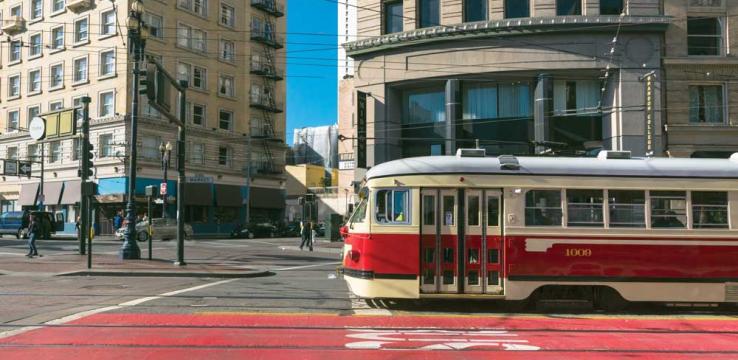
Photos by Sergio Ruiz

Photos by Sergio Ruiz
Urban areas across the country are increasingly focused on developing facilities that improve and encourage nonmotorized transportation. The use of colored lanes is a relatively new method of distinguishing bicycle and transit facilities. Green has been established nationally as the standard color for bicycle lanes. San Francisco is helping push the use of red to highlight dedicated transit lanes by experimenting on several existing transit-only lanes. These color treatments are not only functional; they are changing the character of San Francisco’s public realm. They are a visible manifestation of San Francisco’s decades-old Transit-First Policy and part of a significant transformation happening on our streets.
Market Street
The first green bike lanes in San Francisco were installed on Market Street in 2010. Green bikeways come in different forms, including green-backed “sharrows” (shared lane markings), bike boxes and turn pockets (which give cars turning left their own lane at an intersection). Green bike lanes come solid or dashed where crosstraffic is expected, such as at intersections and right-turn lanes.
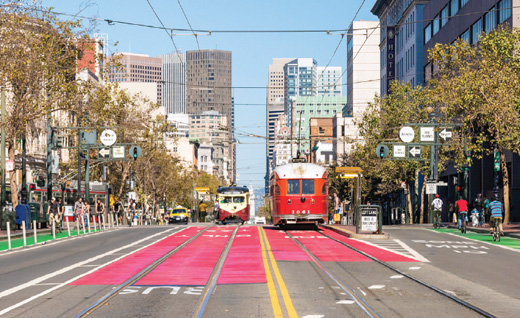
The high visibility of green bike lanes is not always well received. In Los Angeles, after green bike lanes were painted on Spring Street, the Hollywood film industry complained that the bright green color ruined the historic look of the downtown street, which is often used for filming. The city eventually removed much of the green paint as a compromise. Fortunately, the bright green treatment has been enthusiastically welcomed on San Francisco’s historic streets.
Polk Street
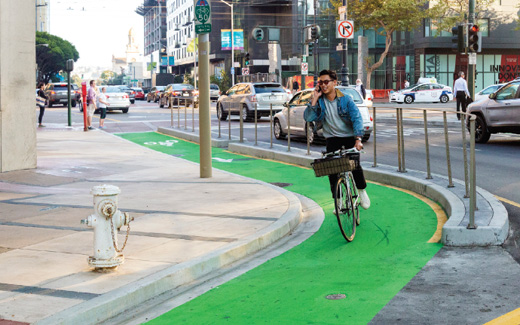
In 2013, the San Francisco Municipal Transportation Agency (SFMTA) began experimenting with red transit-only lanes on Church Street to improve transit performance. Initial data from the first installment has shown reduced delays for Muni vehicles. Since then, other transit lanes around the city have been getting the red carpet treatment, including Market Street. Most of these are existing transitonly lanes, some are new, such as the contra-flow bus-only lane on Haight approaching Market Street.
Embarcadero
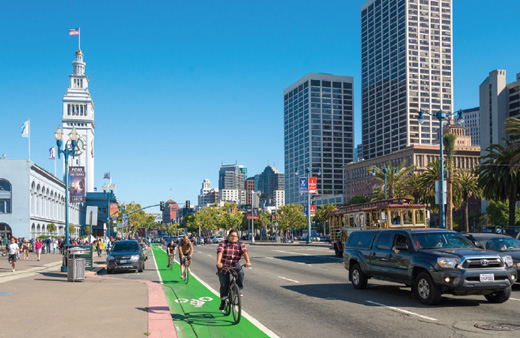
San Francisco is embracing protected bikeways, which many consider essential in providing a complete bicycle network for all types of users. These are usually separated from motor traffic by posts, raised curbs, planters or parked cars. The National Association of City Transportation Officials (NACTO) has developed guidelines for designing protected bikeways, which have been endorsed by cities and states across the country, including California.
The Castro
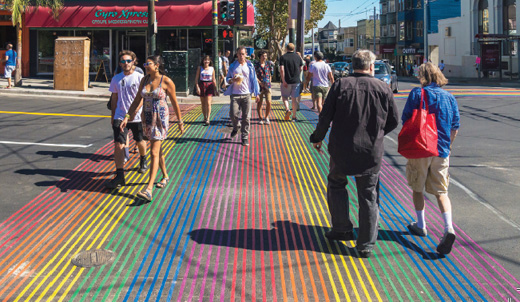
Bicyclists and transit riders aren’t the only ones benefiting from colored streets. Pedestrians have also been the focus of recent projects around the city. In the Castro, a high-profile streetscape project includes bright rainbow crosswalks, serving a dual purpose of increasing pedestrian visibility and celebrating the neighborhood’s LGBTQ history and culture.